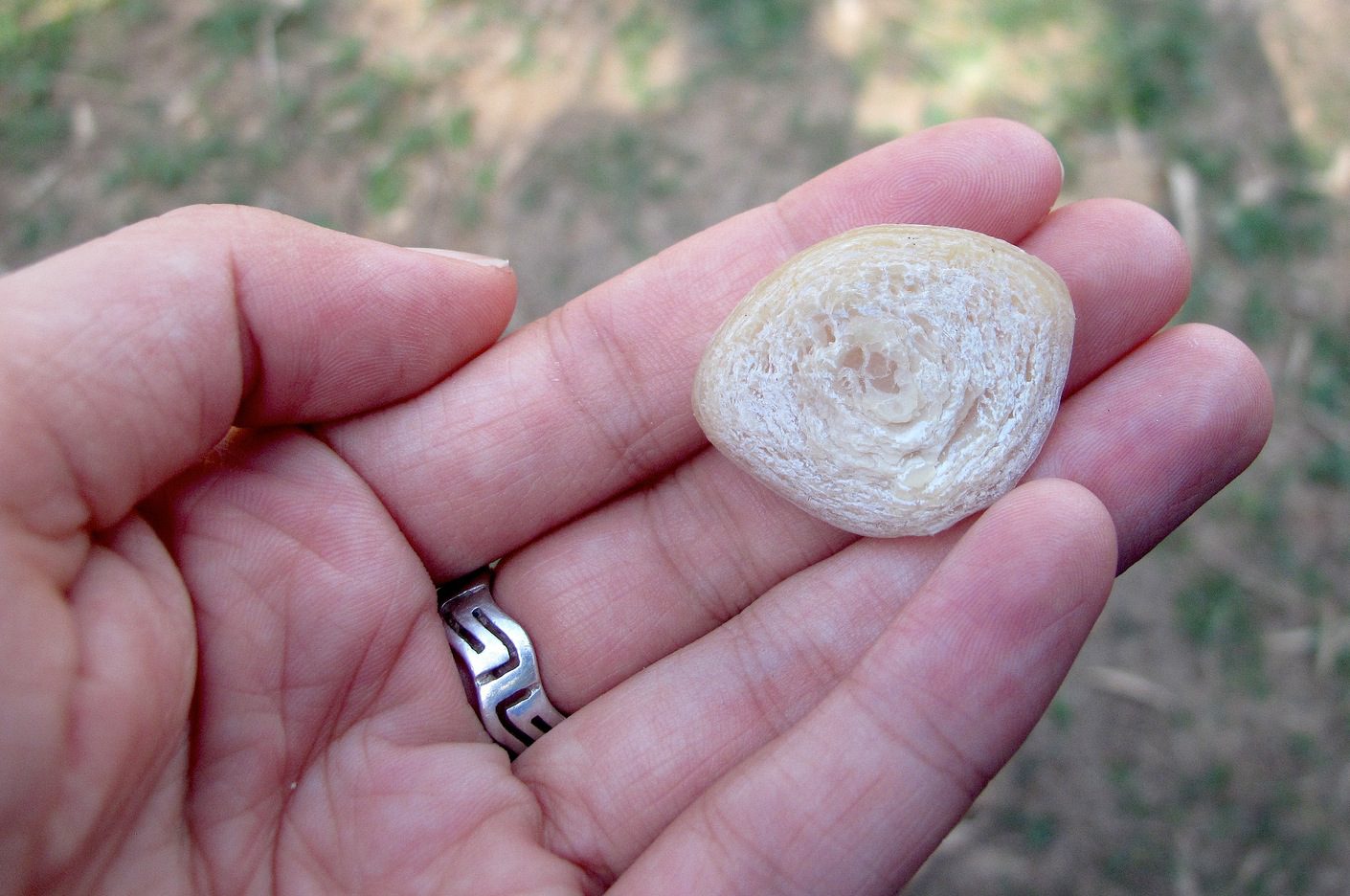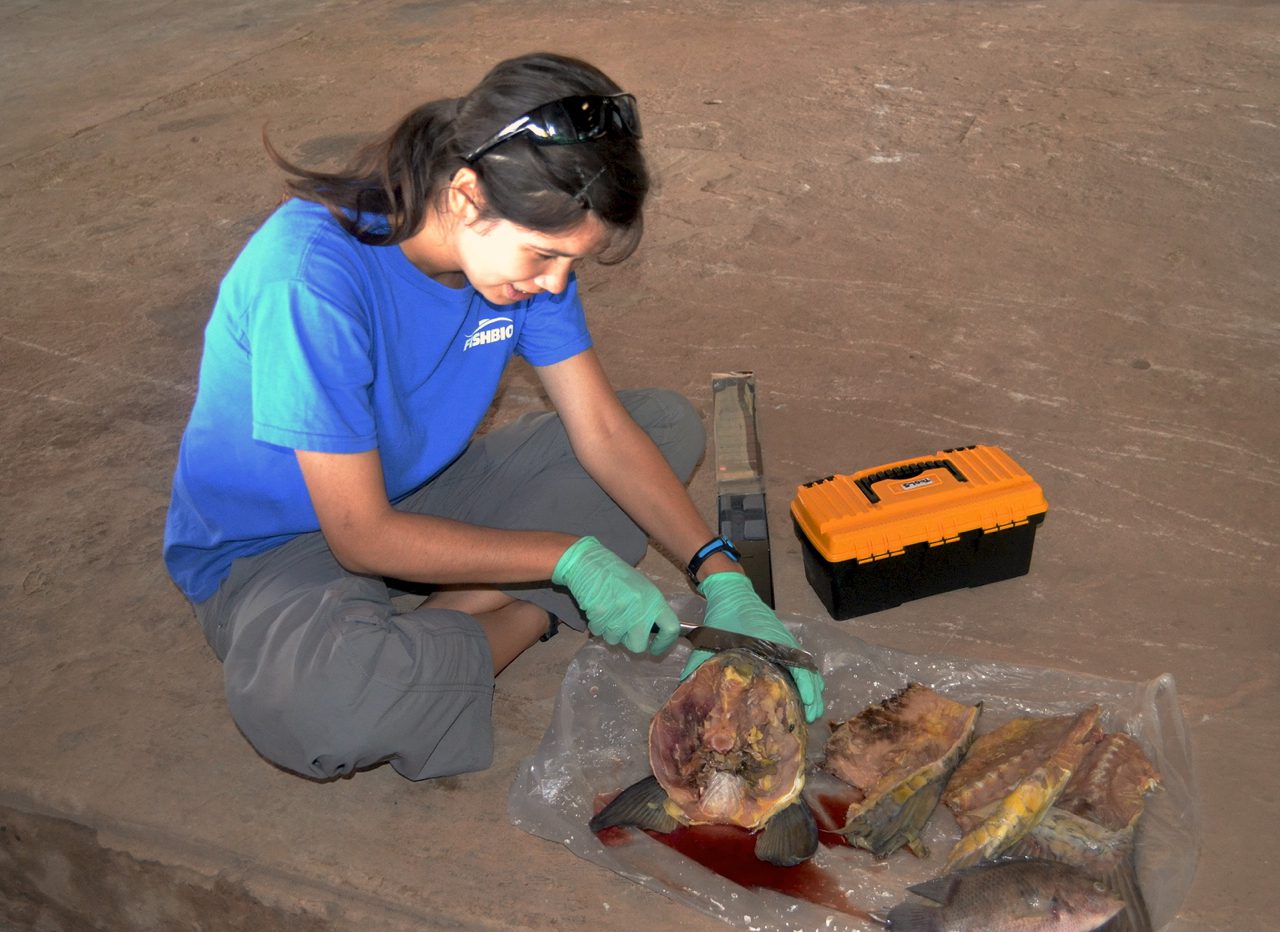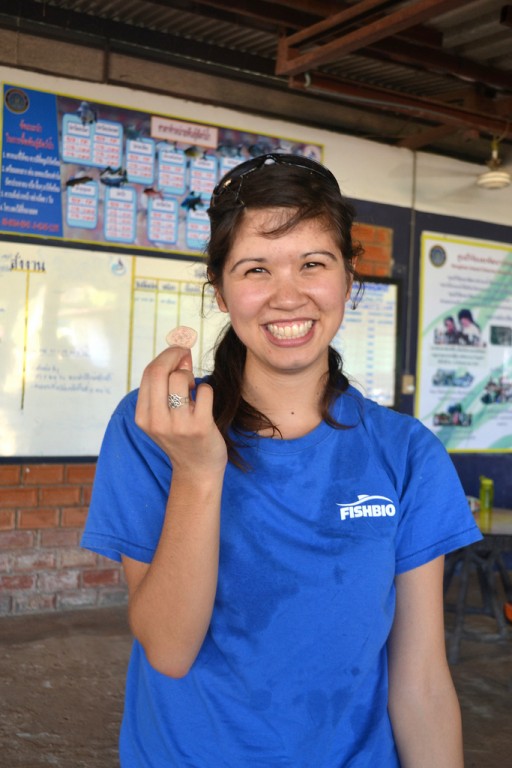Friday June 27, 2014

Fish bones have plenty of stories to tell – particularly a special type of ear bone called an otolith that keeps a record of a fish’s entire life. A whole field of fish science revolves around the study of these little bones, which can reveal a fish’s age and movement. Our staff in Laos got their hands on a surprisingly large otolith while visiting a conservation hatchery in Thailand – but not without some struggle first! Fish have three pairs of otoliths located behind the brain, each with a different shape, that help the fish with hearing and balance. The largest pair, the sagittae, is most commonly studied because these otoliths are the easiest to find when dissecting a fish. The other otoliths are called the lapilli and the asterisci.
Similar to tree rings, fish otoliths lay down roughly one pair of translucent and opaque bands every year to make a ring. These show up as light and dark bands under a microscope, and counting them provides an estimate of the fish’s age. Additional studies are also needed to validate these ring counts – that is, to verify if one pair of bands actually does equal one year of age, or if the fish deposit bands more or less frequently (Beamish and McFarlane 1983). Records of a fish’s size in combination with its age help scientists determine how fast a fish species grows. Otoliths also provide a wealth of information in their microchemistry, or the concentrations of different trace elements and isotopes, which can reveal a fish’s migration patterns and different habitats it has used (Feyrer et al. 2007).

Our staff in Laos are currently studying Probarbus fishes, including Jullien’s golden carp (Probarbus jullieni), and wanted to to see how feasible it would be to extract otoliths from fish in marketplaces. (Although the fish are listed as endangered, they are still regularly sold and eaten in Laos and Thailand). We visited a hatchery that had a Probarbus fish head in their freezer, which the staff gamely let us use for practice. It was quite a workout to carve through the thick, frozen fish skull. After several minutes of futile sawing, it became clear the little knife we had would not do the trick. We know from our California work that retrieving salmon otoliths also requires some serious tools. Once our Lao biologist produced a machete, a few hacks was all it took for an otolith to fall right out.
Otoliths come in a diversity of sizes and shapes, but we were particularly surprised by the heft of the Probarbus otolith. Since ear bones are the smallest bones in the human body, it’s remarkable they attain a considerable size in fish. Then again, Probarbus can grow to be one of the largest freshwater fish in Southeast Asia, so maybe it’s not surprising their ear bones are large too. The maximum age for Probarbus jullieni is currently unknown or unpublished, as is the case for most Mekong fishes. Since we don’t know the length of the fish this otolith came from, we won’t be able to determine the fish’s growth rate. But we do know one thing for sure: Probarbus otolith recovery is enough to work up a sweat in the humid Thai air!

